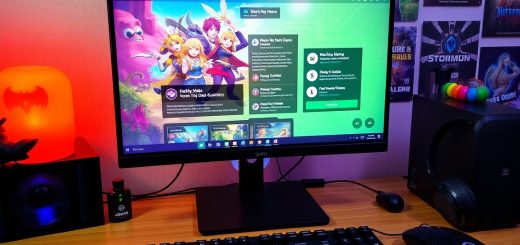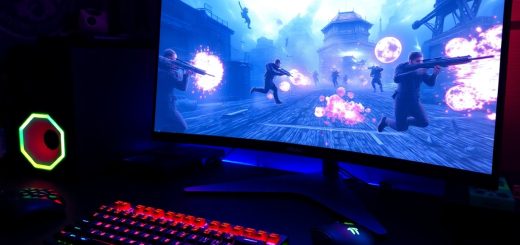How to Create Custom Levels in Online Game Editors
Ever thought about designing your own game levels but felt overwhelmed by all the tools and options out there? You’re not alone. Creating custom levels in online game editors might seem like a big task, but it’s actually a lot more approachable than you’d expect. Think of it like building with Lego blocks—you start with simple pieces and gradually snap them together to create something cool and unique. The key is to break down the process into manageable steps and let your creativity flow without getting bogged down by technical details.
First off, don’t worry about making your level perfect right away. It’s like sketching a rough draft before painting a masterpiece. Your initial goal is to get your ideas on the screen, then refine them over time. Many online game editors offer intuitive drag-and-drop interfaces, so you can literally see your level taking shape as you work. This hands-on approach makes the experience fun and less intimidating.
Another important tip is to focus on creating a balance between challenge and enjoyment. You want players to feel excited and engaged, not frustrated or bored. Imagine your level as a roller coaster ride—there should be ups and downs, moments that make players think, and times when they can just relax and enjoy the scenery. This balance keeps the gameplay interesting and encourages players to come back for more.
Don’t forget the value of testing your level frequently. It’s tempting to build everything at once and then test at the end, but catching issues early saves a lot of headaches. Play through your level multiple times, tweak the tricky parts, and ask friends to try it out too. Fresh eyes often spot problems you might miss.
Finally, sharing your creation is where the real magic happens. When you publish your custom level, you open the door to feedback, new ideas, and even collaborations. It’s amazing how a simple level you designed can spark excitement and inspire others in the gaming community. Remember, every great level starts with a single idea and a bit of courage to bring it to life.
Choosing the Right Game Editor
Choosing the right game editor can feel like picking a paintbrush before starting a masterpiece. You want something that fits your style and skill level without making you want to throw your computer out the window. There are tons of options out there, each with its own quirks and perks. So, how do you decide? First, think about what kind of game you want to create. Some editors are perfect for simple puzzle levels, while others shine when building sprawling adventure maps. It’s like choosing between a pocket knife and a full Swiss Army tool—both useful, but for very different tasks.
Ease of use is another big factor. If the editor’s interface looks like a spaceship control panel, you might get lost before you even start. Look for something intuitive, with drag-and-drop features or helpful tutorials to get you going quickly. Don’t underestimate the value of a strong community either. Editors with active user forums or plenty of shared resources can save you hours of frustration. Imagine having a friendly neighborhood guide when you’re stuck—that’s what a good community feels like.
Compatibility is also key. Some editors run smoothly in your browser, while others require downloads or specific operating systems. If you want to work on the go, a web-based editor might be your best bet. On the other hand, desktop applications often offer more powerful tools but can be more demanding on your hardware. It’s a trade-off worth considering before you dive in.
To help you weigh your options, here’s a quick look at some popular online game editors and what they bring to the table:
| Editor | Best For | Ease of Use | Key Features |
|---|---|---|---|
| Editor A | Simple platformers | Beginner-friendly | Drag-and-drop, instant preview |
| Editor B | Complex RPGs | Intermediate | Custom scripting, asset import |
| Editor C | Multiplayer maps | Advanced | Network testing, detailed terrain |
Remember, the perfect editor is the one that fits your creative flow without getting in the way. Try a few, play around, and see which one feels like an extension of your own imagination. After all, the right tool can turn a good idea into something truly memorable.
Designing Engaging Level Layouts
Designing a level that hooks players from the start isn’t just about placing obstacles randomly. It’s an art—a mix of creativity and strategy. Imagine your level as a story. You want to guide players smoothly, giving them challenges that feel fair but exciting. Too easy? They get bored. Too hard? They get frustrated. The secret lies in balance.
Start by sketching your ideas, even roughly. Think about the flow: where should players feel tension? Where can they catch a breather? This ebb and flow keeps the gameplay dynamic. Use visual cues to lead players naturally. Bright colors, distinct shapes, or even sound hints can subtly guide without heavy-handed instructions.
Variety is your best friend here. Mix up the obstacles and challenges. For example, combine puzzles with action sequences or timed challenges with exploration segments. This keeps players guessing and eager to see what’s next. But don’t go overboard—too many ideas crammed in can overwhelm and confuse.
One trick I often use is layering difficulty. Start simple, then gradually ramp up. This way, players feel a sense of progress and accomplishment. It’s like climbing a hill—not a sudden mountain. Remember, every level should build on the last, teaching new skills or introducing fresh mechanics.
Think about player feedback too. When you test your level, watch how players react. Are they stuck somewhere? Are they breezing through? Use their input to tweak your design. Sometimes a tiny change—like adjusting a jump’s length or repositioning an enemy—can make a huge difference.
Here’s a quick checklist to keep in mind while designing:
- Clear objectives: Make sure players know what to do without confusion.
- Balanced challenge: Mix easy and tough parts to maintain interest.
- Visual guidance: Use design elements to subtly direct players.
- Consistent theme: Keep the level’s look and feel cohesive.
- Test often: Playtest repeatedly and adjust based on feedback.
Finally, don’t forget the fun factor. At the end of the day, your level should make players smile, cheer, or even shout in surprise. Designing engaging layouts is like crafting a rollercoaster ride—thrills, pauses, and surprises all rolled into one. So, dive in, experiment boldly, and watch your ideas come alive!
Testing and Sharing Your Custom Levels
Once you’ve poured your creativity into designing a custom level, the next crucial step is testing. Think of this phase as a dress rehearsal for your game stage. You wouldn’t want your players to stumble over unexpected glitches or get stuck in a spot that’s too tricky, right? Testing helps you catch those pesky bugs and balance issues before anyone else sees them. It’s like giving your level a thorough check-up to ensure it’s healthy and fun.
Start by playing through your level multiple times. Don’t rush it. Try to experience the level as a new player would. Pay attention to moments where you feel frustrated or bored. Are the challenges fair? Is the pacing smooth? If something feels off, tweak it. Sometimes, even small changes can make a big difference. You might also ask friends or fellow gamers to test your level. Fresh eyes often spot problems you missed.
Debugging is another part of this process. If your game editor offers tools to track errors or performance issues, use them. Fixing these ensures your level runs smoothly on different devices and browsers. Remember, a flawless experience keeps players coming back for more.
Now, about sharing your masterpiece. This is where your creation truly comes alive. Most online game editors have built-in options to publish or share levels with the community. But before hitting that button, double-check your level’s description and title. Make them clear and catchy to attract players. You want others to feel excited and curious to try your level.
Sharing isn’t just about broadcasting your work; it’s about connecting. Once your level is out there, listen to feedback. Some players might love it, others might suggest improvements. Take it all in stride. This dialogue helps you grow as a level designer and keeps your creations fresh and engaging.
To wrap it up, here’s a quick checklist to keep in mind:
- Playtest thoroughly yourself and with others.
- Fix bugs and smooth out gameplay flow.
- Use editor tools for debugging and optimization.
- Craft a clear, inviting title and description.
- Engage with player feedback after sharing.
Testing and sharing might sound like extra steps, but they’re what turn a simple idea into a memorable gaming experience. So, don’t rush—embrace this part of the process. Your players will thank you!
Frequently Asked Questions (The title must be written in English.)
- What is the best way to choose the right online game editor for custom levels?
Picking the perfect game editor can feel like choosing a needle in a haystack, but it boils down to your goals and skill level. Look for editors with a user-friendly interface, plenty of tutorials, and features that match your game’s style. Compatibility with your device and community support are also huge bonuses. Think of it as finding the right paintbrush for your masterpiece—comfort and control matter!
- How can I design levels that are both fun and challenging?
Designing a level is like telling a story with twists and turns. Balance is key—you want players to feel a sense of achievement without getting frustrated. Start simple, then gradually add complexity. Use obstacles and rewards smartly to keep players engaged. Imagine a rollercoaster: thrilling ups and downs, but never too wild to lose the riders.
- Why is testing my custom levels so important?
Testing is your secret weapon against bugs and boring gameplay. It’s like a dress rehearsal before the big show—catching glitches, spotting unfair traps, and making sure everything flows smoothly. Play your level multiple times, and better yet, get friends to try it out. Fresh eyes can reveal surprises you might miss!
- What’s the best way to share my custom levels with others?
Sharing your creation is where the magic happens! Most online editors have built-in sharing options—use them to upload your level to the community hub or social media. Don’t forget to include a catchy description and maybe some screenshots. Think of it as inviting friends to your party; the more inviting, the better the turnout!
- Can I update my custom levels after sharing them?
Absolutely! One of the coolest parts about online game editors is the ability to tweak and improve your levels based on feedback. Keep an eye on player comments and be ready to make changes. It’s like tuning a guitar—you want your level to hit the right notes every time.
- Are there any common pitfalls to avoid when creating custom levels?
Oh yes, and avoiding them can save you tons of headaches! Watch out for overly complicated layouts that confuse players, or levels that are too easy and boring. Also, neglecting testing is a big no-no. Remember, simplicity with creativity often wins the race.


